
DB-Engines Ranking: Top Graph Databases You Should Use
When developers embark on a project, whether it's a simple web application or a complex project, choosing the right database is crucial. The selection of a database can significantly impact the project's present and future trajectory, influencing its quality and performance. Often, developers opt for familiar platforms for further development, but this can lead to regrets later on. Fortunately, DB-Engines comes to the rescue.
What is DB-Engines?
DB-Engines is a valuable resource for developers and data professionals seeking to evaluate and compare various database management systems. It provides comprehensive information and rankings for over 350 database systems, including both relational (SQL) and non-relational (NoSQL) databases, graph databases, time series databases, and key-value stores. We will leave the relational database for now.
In this article, we will focus on the most popular graph databases according to DB-Engines. If you're unsure whether a graph database is the right fit for your needs, head over to our graph database vs relational database article first.
Let's dive into the top 10 graph databases, both multi-model and pure graph, based on DB-Engines rankings as of May 2023:
10. GraphDB
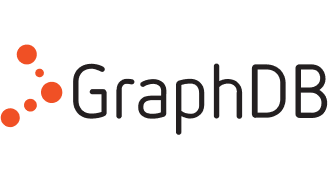
GraphDB is a graph database that offers features for storing, managing, and querying graph data.
GraphDB pros:
It offers several advantages, including:
- Being RDF-based: GraphDB utilizes the RDF data model, enabling flexible and semantic representation of data.
- Scalability: It handles large-scale graph data, ensuring fast query response times.
- Standards compliance: GraphDB adheres to RDF standards and supports SPARQL, a widely adopted query language for semantic web data.
- Ontology support: It includes features that facilitate working with ontologies, enabling sophisticated reasoning and inference capabilities.
GraphDB cons:
Despite these strengths, just like any database, GraphDB has a few limitations:
- Being RDF-focused: It could be a strength, but also a weakness. GraphDB's primary focus is on RDF-based data models, which may not suit all use cases or organizations preferring other graph data models.
- Learning curve: Efficient utilization of GraphDB may require familiarity with semantic web technologies and experience with RDF and SPARQL.
Query language: GraphDB employs SPARQL (SPARQL Protocol and RDF Query Language), a standard query language for querying RDF data.
Best use cases: The GraphDB NoSQL database finds its niche in various applications, such as:
- Semantic web applications: GraphDB's RDF-based nature and SPARQL query language make it ideal for building applications leveraging semantic web technologies and ontologies.
- Knowledge Graphs: GraphDB is commonly employed to build and manage knowledge graphs. Knowledge graphs capture complex relationships and semantic connections between entities, enabling advanced search, navigation, and discovery of information. They are used in domains such as life sciences, cultural heritage, publishing, and e-commerce.
9. NebulaGraph
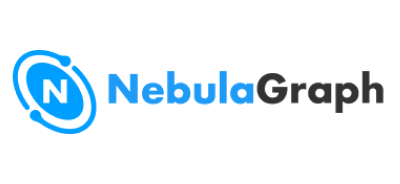
NebulaGraph is a graph database designed to handle and process large-scale graph data. The database combines distributed architecture, flexible data model options, and rich query capabilities.
NebulaGraph pros:
Two major qualities make Nebula stand out:
- Horizontal scalability: One of the key strengths of NebulaGraph is its ability in horizontal scaling across multiple servers, thanks to its distributed architecture
- Property graphs: NebulaGraph supports property graphs, providing a data model that can adapt to changing requirements. Its schema allows data modeling and managing the graph data.
NebulaGraph cons:
There are also potential drawbacks or challenges associated with using NebulaGraph, which include:
- Learning curve: NebulaGraph may have a steep learning curve for users who are not familiar with graph databases or distributed systems. It requires understanding concepts such as graph modeling, distributed storage, and query optimization.
- Deployment complexity: Setting up and configuring a distributed database like NebulaGraph can be complex and time-consuming. It may require expertise in distributed systems and infrastructure management to ensure proper deployment and maintenance.
- Scalability limitations: While Nebula Graph is designed for scalability, there may be certain limits in terms of the number of nodes or the size of the graph it can handle effectively. It's important to consider the scalability requirements of your specific use case and ensure that NebulaGraph can meet those needs.
- Documentation gaps: You may encounter gaps or inconsistencies that could hinder your understanding or implementation.
Query language: NebulaGraph uses the Graph Query Language (GQL) that combines graph traversal and declarative querying to facilitate the exploration and analysis of the graph.
Best use cases: Although NebulaGraph is relatively new, it still has certain examples of use cases it is suited for:
- NebulaGraph offers social network analysis, where it can identify influencers and analyze network dynamics.
- It also proves valuable in recommendation systems, leveraging its ability to analyze relationships and patterns in graph data.
8. Memgraph

As an industry-leading in-memory graph database designed specifically for real-time graph processing and analytics, the list of companies using Memgraph speaks volumes about its quality. Memgraph offers high-performance graph algorithms and supports complex graph queries, making it an ideal choice for organizations that require real-time graph analytics capabilities.
Memgraph pros:
Memgraph has a variety of valuable features, some of them being:
- High-performance graph processing: It is optimized for handling large-scale graphs and executing complex graph queries efficiently. By utilizing in-memory storage and parallel processing, it can provide fast query response times and handle high throughput.
- ACID compliance: Memgraph supports ACID (Atomicity, Consistency, Isolation, Durability) properties, ensuring data integrity and consistency even in the face of concurrent transactions or failures. This makes it suitable for applications that require strict data consistency guarantees.
- Cypher query language: Memgraph supports the Cypher query language, a widely adopted and expressive graph query language. Cypher simplifies querying and manipulating graph data by providing a declarative syntax that is intuitive for developers familiar with SQL-like syntax.
- Integration capabilities: Memgraph offers integrations with popular programming languages and frameworks, making it easier to integrate with existing applications and data pipelines. It provides official client libraries for Python, Java, and other languages, enabling seamless integration into your development stack.
- Community support and documentation: Memgraph has an active and growing community, with resources such as documentation, tutorials, and a dedicated support channel. This support ecosystem can be valuable for developers seeking assistance or sharing experiences with other Memgraph users.
- Graph algorithms and analytics: Memgraph provides a range of built-in graph algorithms and analytics functions, allowing you to perform complex graph analyses such as centrality, community detection, and pathfinding. These built-in capabilities can save development time and make it easier to extract meaningful insights from your graph data.
Memgraph cons:
While Memgraph's in-memory nature provides excellent performance benefits, it also comes with some limitations:
- In-memory storage limitations: Memgraph primarily relies on in-memory storage, which means that the amount of data you can store is limited by the available memory resources. This can be a constraint for applications with extremely large datasets.
- Learning curve: If you are new to graph databases or the Cypher query language, there may be a learning curve involved in understanding and effectively utilizing Memgraph. Getting familiar with graph modeling and the specifics of Cypher queries might require additional time and effort.
Query language: Memgraph utilizes the openCypher query language, a standardized and expressive language for querying graph data. It combines a familiar SQL-like syntax with graph-specific extensions, allowing users to traverse and analyze graph structures efficiently.
Best use cases: The applications of Memgraph in various use cases are countless:
- Social network analysis: Memgraph excels in managing and analyzing social network data. It can efficiently store and traverse complex social graphs, enabling tasks such as identifying communities, detecting influencers, recommending connections, and measuring social network metrics.
- Fraud detection: Graph databases are highly effective for fraud detection and prevention. Memgraph can help uncover patterns and relationships in large datasets to identify fraudulent activities, such as money laundering, identity theft, or network-based fraud schemes, by analyzing connections and patterns across different entities.
- Recommendation engines: Memgraph's graph querying capabilities make it well-suited for building recommendation systems whether for a search engine or media applications. By modeling user preferences, item attributes, and user-item interactions as a graph, Memgraph can provide personalized recommendations based on similarity, neighborhood analysis, and collaborative filtering algorithms.
- Cybersecurity: Memgraph efficiently stores interconnected data and helps threat analysts to identify the sources, patterns, and chains of malicious attacks. One example real-life example is when Memgraph's capabilities enabled Saporo's users to spot weaknesses in their infrastructure immediately and minimize vulnerabilities in their attack surface partnership
- Knowledge graphs: Memgraph allows you to integrate disparate data sources into unified knowledge graphs to help you extract new knowledge and enhance collaboration among peers.
- Identity Access Management (IAM): Memgraph enables developers to build IAM systems that can track complex permissions and check access rules in milliseconds at scale.
7. JanusGraph
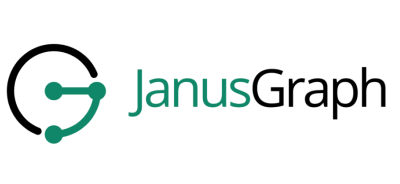
JanusGraph is a distributed graph database optimized for scalability and performance. It is designed to handle large-scale graph data and provides powerful graph querying and analytics capabilities.
JanusGraph pros:
JanusGraph offers the following advantages:
- ACID transactions: It supports atomicity, consistency, isolation, and durability, ensuring data integrity in transactional operations.
- Pluggable storage backends: JanusGraph provides flexibility by supporting various storage backends, including Apache Cassandra, Apache HBase, and Google Cloud Bigtable. It can also be used with ANZOgraph DB, a specialized graph database.
- Extensive graph querying: It supports the Gremlin graph traversal language, enabling expressive and efficient querying of complex data in the graph. Users can perform direct access to all their data points for quick retrieval and analysis.
JanusGraph cons:
Despite the strengths, JanusGraph also has a few weak spots:
- Configuration and tuning complexity: Setting up and fine-tuning a distributed JanusGraph cluster may require expertise and careful configuration for optimal performance. Organizations may need to invest in database management to handle the complexities involved.
- Limited query language options: JanusGraph primarily uses Gremlin for graph querying, which may have a steeper learning curve for users unfamiliar with the language. Users who prefer SQL may have to adapt to the Gremlin query language.
Query language: JanusGraph predominantly uses Gremlin, a powerful graph traversal language that allows users to express complex graph queries and traversals efficiently. However, it can also be integrated with SQL databases like SQL Server for organizations with existing SQL infrastructure.
Best use cases: The distributed graph database is well-suited for various use cases, including:
- Social network analysis: JanusGraph's scalability and distributed architecture make it ideal for analyzing social network data with millions of nodes and relationships. It can handle the complexity of graphs representing relationships between individuals or entities.
- Graph-based search engines: JanusGraph's powerful querying capabilities and support for full-text search enable the development of search engines that can process complex graph data. This makes it ideal for building search engines that provide relevant results based on the relationships between entities.
6. Amazon Neptune

Amazon Neptune is a graph database service provided by Amazon Web Services (AWS), designed to store and process highly connected data.
Amazon Neptune pros:
Users of Amazon Neptune are offered the benefits such as:
- Managed service: Neptune is a fully managed graph database service, provided by AWS, which takes care of administrative tasks such as infrastructure provisioning, software updates, and backups, allowing users to focus on their applications.
- Integration with AWS ecosystem: Neptune seamlessly integrates with other AWS services, such as AWS Identity and Access Management (IAM), Amazon CloudWatch, and AWS CloudTrail, enabling easy management and monitoring. It also allows organizations to leverage the full potential of the AWS ecosystem.
- Compatibility with popular graph query languages: Neptune supports both Apache TinkerPop Gremlin and W3C's RDF-based SPARQL query languages, providing flexibility for different application needs. It allows users to use the most suitable query language for their specific requirements.
Amazon Neptune cons:
Some of the potential downsides would be:
- Cost considerations: As a managed service, the pricing for Neptune is based on usage, which may result in higher costs for certain workloads or large datasets. Organizations need to carefully consider their budget and usage requirements.
- Vendor lock-in: Utilizing Amazon Neptune ties the application to the AWS ecosystem, which may limit flexibility if there is a need to switch to a different provider in the future. It's important for organizations to assess their long-term strategy and evaluate the impact of vendor lock-in.
Query language: Amazon Neptune supports two query languages, Gremlin and SPARQL. Gremlin provides a graph traversal language for querying and manipulating graph data while SPARQL is an adopted query language for RDF-based graph databases, enabling semantic querying and reasoning.
Best use cases: Amazon Neptune has a bunch of use cases:
- Knowledge graphs: Neptune can store and analyze complex relationships, making it suitable for building knowledge graphs.
- Social networking: Neptune's ability to handle highly connected data makes it effective for social network analysis applications. Organizations can identify patterns and detect suspicious activities.
- Life sciences and healthcare: Neptune can be used to model and analyze biological and medical data, enabling advanced research, drug discovery, and patient analysis.
5. OrientDB
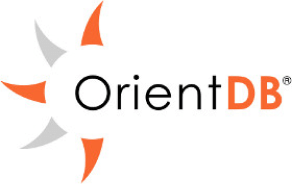
OrientDB is an open-source, multi-model graph database that combines the features of graph databases and document databases. It offers flexibility in data modeling and supports multiple query languages.
OrientDB pros:
Here are several pros of using OrientDB:
- Multi-model support: OrientDB allows users to model data as graphs, documents, key-value pairs, or even as a combination of these models, providing flexibility in data representation.
- ACID transactions: OrientDB ensures data consistency and integrity by supporting atomicity, consistency, isolation, and durability in transactional operations.
- Flexible query languages: OrientDB supports multiple query languages, including SQL-like queries, graph traversals using the Gremlin language, and pattern-matching queries with OrientDB's own SQL extensions.
OrientDB cons:
And a few more downsides include:
- Learning curve: OrientDB's multi-model approach and diverse query languages may require users to learn and understand multiple concepts and syntaxes.
- Community and ecosystem: While OrientDB has an active community, it may have a smaller user base compared to some other graph databases, resulting in a more limited ecosystem and community support.
Query language: OrientDB supports multiple query languages:
- SQL: It provides a familiar SQL-like query language for working with structured data and performing relational operations.
- Gremlin: OrientDB supports the Gremlin query language, allowing users to express graph traversals and perform complex graph queries.
- OrientDB SQL extensions: OrientDB extends SQL with additional syntax and functions to support graph-specific operations and pattern matching.
Best use cases: Fairly enough, OrientDB would be suited for applications such as:
- Content management and social networks: Its multi-model capabilities make it suitable for building content management systems, social networks, and applications that require flexible data models.
- Identity and access management: It can be used to model and manage user identities, roles, and permissions, providing robust access control for applications and systems.
4. ArangoDB
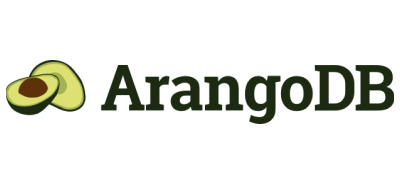
ArangoDB is a multi-model database that supports document, graph, and key-value data models. It provides a unified and flexible solution for storing, querying, and manipulating data across different paradigms.
ArangoDB pros:
The database offers advantages like:
- Multi-model support: ArangoDB allows users to work with documents, graphs, and key-value pairs within a single database, eliminating the need for separate systems.
- Flexible data modeling: It provides a schema-less data model, allowing users to evolve their data structures over time without requiring upfront schema definitions.
- AQL query language: ArangoDB uses the ArangoDB Query Language (AQL), a SQL-like language that enables querying across different data models and supports joins and graph traversal operations.
ArangoDB cons:
And some of the cons that also reoccur across the list are:
- Learning curve: Working with a multi-model database and the AQL query language may require users to familiarize themselves with different data models and query syntaxes.
- Performance trade-offs: While ArangoDB provides flexibility by supporting multiple data models, there might be performance trade-offs when compared to specialized databases dedicated to specific data models.
Query language: ArangoDB uses the ArangoDB Query Language (AQL), which is an SQL-like language. AQL allows users to perform queries, joins, aggregations, and graph traversals across different data models.
Best use cases: ArangoDB is well-suited for various use cases, including:
- Content management and e-commerce: Its multi-model capabilities make it suitable for building content management systems, e-commerce platforms, and applications with diverse data requirements.
- Social networks and recommendation engines: ArangoDB's graph capabilities enable the modeling and analysis of social relationships, making it useful for building social networks and recommendation systems.
- Catalog management and knowledge graphs: It can be used to organize and manage complex product catalogs, document repositories, and knowledge graphs by leveraging its document and graph data models.
3. Virtuoso
Virtuoso is a high-performance, scalable, and feature-rich RDF triple store and graph database. It provides a powerful platform for storing, querying, and reasoning over RDF data.
Virtuoso pros:
Virtuoso is knowns for its:
- RDF triple store: It provides efficient storage and retrieval of RDF triples, making it suitable for managing and querying large-scale semantic datasets.
- SPARQL and SQL support: Virtuoso supports both the SPARQL query language for RDF data and SQL for relational data, providing flexibility for different types of queries.
- Reasoning and inference: Virtuoso offers built-in support for RDF Schema (RDFS) and Web Ontology Language (OWL), enabling inferencing and semantic reasoning over the data.
Virtuoso cons:
So, where does the company lag?
- Complexity: Setting up and configuring Virtuoso may require expertise and careful consideration of performance tuning options for optimal results.
- Learning curve: Working with RDF data and SPARQL queries may require some familiarity with semantic web technologies and RDF modeling concepts.
Query language: Virtuoso supports the SPARQL query language, which is specifically designed for querying RDF data. SPARQL allows users to express complex graph patterns, perform aggregations, and apply filters to retrieve and manipulate data.
Best use cases: Respectively, here is where Virtuoso helps organizations succeed:
- Semantic web applications: It is widely used for building applications that leverage linked open data, semantic web technologies, and ontologies.
- Data exploration and analytics: Virtuoso's graph database features enable exploring and analyzing relationships between entities, making it valuable for network analysis and data exploration tasks.
2. Microsoft Azure Cosmos DB
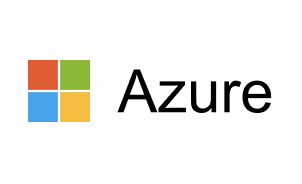
Microsoft Azure Cosmos DB is a globally distributed, multi-model database service offered by Microsoft Azure. It provides a flexible solution for building globally distributed applications with low latency and high availability.
Azure Cosmos DB pros:
The pros of the database extend to:
- Global distribution: It enables data to be replicated across multiple Azure regions, allowing for low-latency access and high availability worldwide.
- Multi-model support: Azure Cosmos DB supports various data models, including document, key-value, graph, column-family, and table, offering flexibility to accommodate different application needs.
- SLA-backed guarantees: Azure Cosmos DB provides service level agreements (SLAs) for uptime, throughput, and latency, ensuring reliable performance for mission-critical applications.
- Integration with Azure services: It seamlessly integrates with other Azure services, such as Azure Functions, Azure Logic Apps, and Azure Synapse Analytics, enabling streamlined application development and data processing.
Azure Cosmos DB cons:
Azure Cosmos DB users are faced with a few considerations:
- Cost: Using Azure Cosmos DB can result in higher costs, especially for applications with high storage or throughput requirements.
- Learning curve: The complexity of configuring and optimizing Azure Cosmos DB for specific use cases may require some expertise and learning.
Query language: Azure Cosmos DB supports multiple query APIs depending on the data model used:
- SQL API (formerly DocumentDB): This API uses an SQL-like query language for querying and manipulating JSON documents.
- MongoDB API: It provides a compatible interface with MongoDB, allowing applications that use MongoDB to migrate easily to Azure Cosmos DB.
- Gremlin API: For graph data, Azure Cosmos DB supports the Gremlin query language, enabling graph traversals and analysis.
Best use cases: Azure Cosmos DB has a handful of use cases:
- Global-scale applications: Its global distribution and low-latency access make it ideal for applications that require data replication and synchronization across multiple regions.
- Personalization: With its support for multiple data models, including documents and graphs, Azure Cosmos DB can power personalized recommendation systems by modeling user preferences and relationships between entities.
- Web applications: Azure Cosmos DB's scalability and multi-region replication make it a reliable choice for building web applications that require high availability and scalability.
1. Neo4j
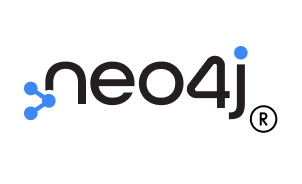
Neo4j is a graph database management system. It is designed to store, manage, and query graph-structured data with a focus on relationships between entities.
Neo4j pros:
This popular database offers several benefits to its users:
- Native graph storage and processing: Neo4j stores data in a graph format, allowing for the representation and traversal of relationships, making it particularly well-suited for applications with complex and interconnected data.
- High performance: Neo4j's native graph processing engine enables fast querying and traversal of graph structures.
- Cypher query language: Neo4j uses the Cypher query language, which is specifically designed for graph databases. Cypher provides an intuitive and expressive syntax for querying and manipulating graph data.
Neo4j cons:
What you should be careful about are:
- Cost: Neo4j offers both open-source and commercial editions, with the commercial edition providing additional features and support. The commercial edition can be costly, particularly for large-scale deployments or enterprise-level usage. Organizations with budget constraints may find it challenging to adopt the commercial version.
- Performance considerations: While Neo4j is known for performance, certain factors do impact its speed and efficiency. Complex or deeply nested queries, large transaction sizes, or suboptimal data modeling choices can lead to slower query response times. It's important to carefully design and optimize queries for optimal performance.
- Data size limitations: In certain situations, such as when working with extremely large graphs or datasets that exceed the available memory resources, Neo4j's in-memory storage may pose limitations. Addressing these limitations may require optimizing memory management, using disk-based storage options, or considering alternative database solutions.
- Maturity of features: While Neo4j has been in development for many years and offers a wide range of features, some newer features may still be in the early stages of maturity. These features may have limited documentation, fewer real-world use cases, and occasional stability issues.
Query language: Neo4j uses Cypher, a declarative query language specifically designed for graph databases. Cypher provides a human-readable syntax to express patterns and relationships within the graph, making it easy to query and manipulate the data.
Best use cases: The various use case of Neo4j are as follows:
- Social networking and recommendation systems: Neo4j's ability to model and traverse complex relationships makes it ideal for building social networks, recommendation engines, and personalized content systems.
- Knowledge graphs and semantic applications: Neo4j's graph storage and querying capabilities are well-suited for building knowledge graphs and semantic applications that require reasoning and inference over relationships and ontologies.
- Master data management: Neo4j can be used to model and manage master data, providing a unified and efficient way to handle complex relationships and hierarchies in data.
Takeaways
From the initial decision to employ a graph database to the final selection, it involves a painstaking process of evaluating numerous databases. Hopefully, this article covers all the crucial bullet points to simplify your decision-making process. Ultimately, it comes down to assessing whether the chosen database addresses your use case and whether its documentation and community support are available to address any future queries you may have.
Memgraph’s community is always active on Discord so feel free to join and ask away. If you are considering different graph databases, check out Memgraph’s use cases and latest benchmarks to see how it compares to other solutions.